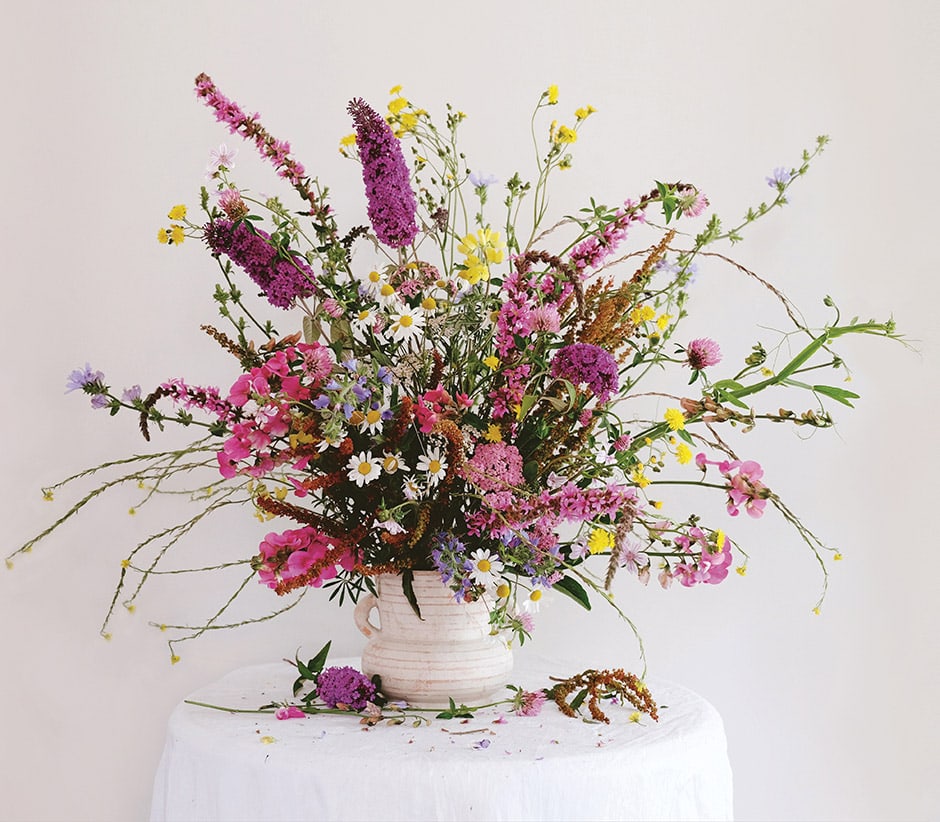My discovery of gardening didn’t stop at the gate. I entirely surprised myself when I started to be able to identify plants out in the ‘real world’; it grew into a personal challenge that endlessly flipped through my head. Where I’d never paid any attention to the rambling wild sweet peas that crept around the edges of dry Canterbury roadsides or wondered about the difference between dandelions and their cousins, I became consumed by both noticing and knowing.
This arrangement was gathered while I was out biking in my neighbourhood. All of these plants are introduced species that have taken off in our climate. Plants like purple loosestrife are problematic for our waterways, while others like chicory and red clover have escaped their primary uses in agriculture and taken for the wilds. They’re called weeds, which ultimately means they’re ‘plants growing in the wrong place’. It’s important to forage for weeds responsibly, avoiding carrying any ripe seed heads away with you and spreading them unnecessarily.


Edited extract from Flowers for Friends by Julia Atkinson-Dunn (Koa Press, $45).
Photography Julia Atkinson-Dunn

